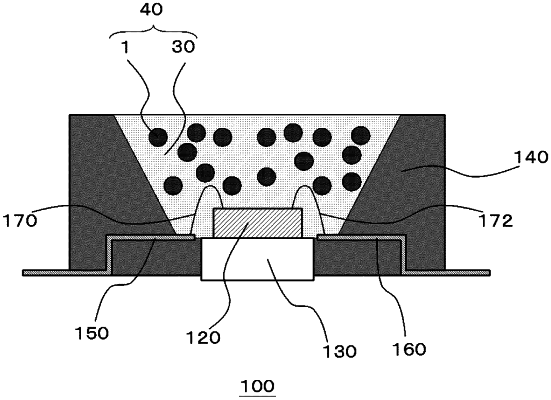| CPC C09K 11/77348 (2021.01) [C01F 17/34 (2020.01); H01L 33/502 (2013.01); C01P 2006/60 (2013.01)] | 9 Claims |

|
1. A phosphor powder composed of α-sialon phosphor particles containing Eu,
wherein an ammonium ion concentration CA of the phosphor powder, determined from the following extracted ion analysis A, is equal to or more than 15 ppm and equal to or less than 100 ppm,
(Extracted Ion Analysis A)
0.5 g of a phosphor powder is added to 25 ml of distilled water in a polytetrafluoroethylene (PTFE)-made container with a lid and held at 60° C. for 24 hours, a total mass MA of ammonium ions included in an aqueous solution obtained by removing a solid content from the solution by filtration is then determined using ion chromatography, and then, CA is determined by dividing MA by a mass of the phosphor powder.
|